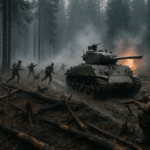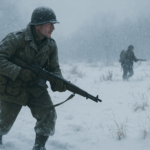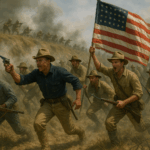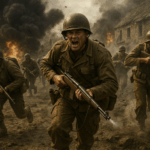When people think of elite Allied units from World War II, two names inevitably rise to the top: the British Special Air Service (SAS) and the U.S. Army Rangers. Both were born out of a desperate need to strike at the Axis powers in ways conventional armies could not. Forged in the fires of war, these units were built from the ground up to be fast, ruthless, and unconventional.
While their origins and operational styles diverged, the SAS and the Rangers shared more in common than most realize. In this article, we’ll explore the fascinating parallels and sharp differences between these two legendary forces.
Forged for War: The Origins
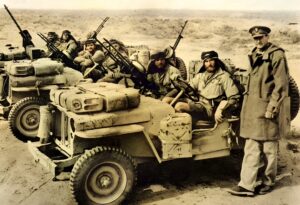
The Special Air Service (SAS) emerged in 1941 thanks to one man’s vision. David Stirling, a Scots Guards officer recovering from a parachuting accident, believed that small units of highly trained men could cause disproportionate damage behind enemy lines. Originally a deception unit under the name “L Detachment, Special Air Service Brigade,” the SAS quickly evolved into a hard-hitting raiding force targeting German and Italian airfields deep in the North African desert.
The U.S. Army Rangers, meanwhile, were formed in 1942 as America looked to create its own elite infantry based on lessons from British Commandos. Major William O. Darby, a driven and charismatic leader, organized the 1st Ranger Battalion with volunteers from across the U.S. Army. These “Darby’s Rangers” would soon be at the tip of the spear in campaigns across North Africa, Sicily, Italy, and France.
Both units were experimental. Both were controversial. And both would prove their worth in blood.
No Ordinary Soldiers: Training and Selection
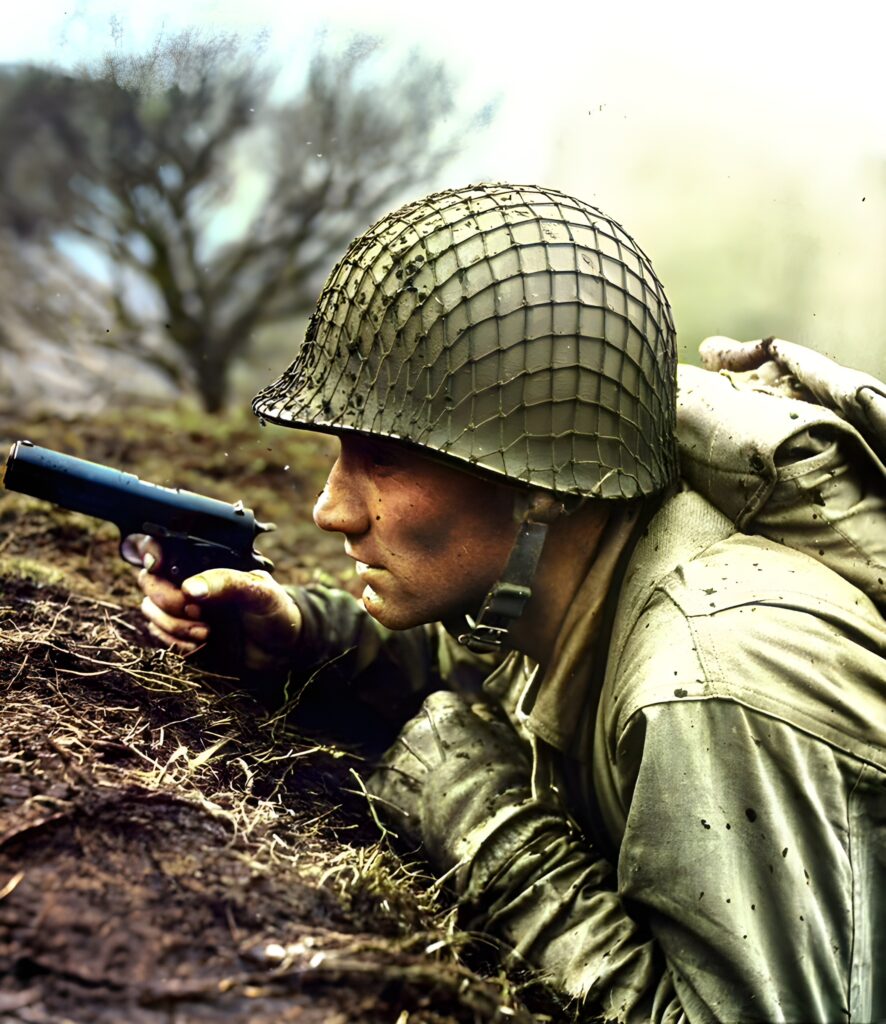
Elite status begins with elite training. For the SAS, that meant selection from among seasoned British troops with a proven track record. Candidates endured brutal conditioning, desert survival instruction, parachute jumps, sabotage training, and learned to live and fight far behind enemy lines, often in complete isolation.
Ranger training was equally severe. The first battalion trained with the British Commandos at Achnacarry Castle in Scotland—an experience infamous for its grueling pace, live ammunition exercises, and constant physical strain. Ranger candidates were expected to scale cliffs, conduct amphibious assaults, and master demolitions, night raids, and hand-to-hand combat.
In both cases, the goal was clear: create small groups of fighters who could punch far above their weight.
Combat in the Shadows: Missions and Operations
The SAS made its name through daring, unconventional raids. In North Africa, small groups of SAS commandos would parachute or drive behind enemy lines in modified jeeps, striking enemy airfields and supply depots. These raids often destroyed dozens of aircraft in a single night and sowed confusion across Axis rear areas.
As the war moved to Europe, the SAS shifted to sabotage and reconnaissance missions in occupied France, Italy, and the Low Countries. Working with the French Resistance and other local fighters, SAS teams targeted railway lines, bridges, and fuel depots—anything that slowed the German war machine.
The U.S. Rangers, by contrast, were used more like elite assault infantry. At the disastrous Dieppe Raid in 1942, Rangers served as observers. But by the North Africa and Sicilian campaigns, they were at the forefront of assaults, often spearheading amphibious landings.
Their most legendary moment came on D-Day, June 6, 1944. Scaling the 100-foot cliffs of Pointe du Hoc under heavy German fire, Rangers silenced artillery batteries that could have decimated the landings at Omaha Beach. Later, they fought heroically in the Battle of Cisterna, though the operation ended in tragedy, with hundreds captured or killed after being cut off.
While the SAS specialized in stealth and sabotage, the Rangers excelled in shock assault and elite infantry tactics.
Tools of the Trade: Weapons and Gear
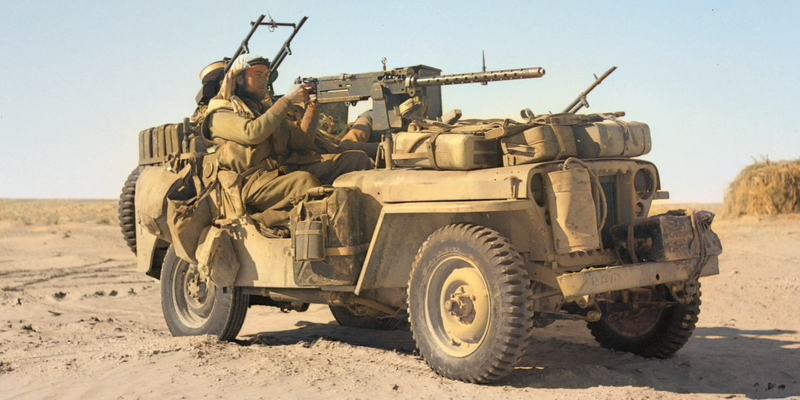
The SAS needed mobility above all. In North Africa, they drove heavily modified jeeps bristling with Vickers K machine guns and carried explosives, pistols, Sten guns, and Fairbairn–Sykes fighting knives. They traveled light, often with only what they could carry or strap to a jeep.
Rangers were equipped with standard U.S. Army kit: M1 Garand rifles, Thompson submachine guns, Browning Automatic Rifles (BARs), and an array of grenades and demolitions. On special missions, they carried rope ladders, climbing gear, and satchel charges—anything that helped them assault fortified positions.
Both units were highly adaptable. They often modified or “borrowed” gear from Allied or enemy sources depending on mission needs.
Culture and Legacy: Then and Now
Culturally, the SAS cultivated a reputation for audacity, improvisation, and cold efficiency. Stirling’s motto, “Who Dares Wins,” summed up their mindset perfectly. Though Stirling himself was captured in 1943, the SAS continued its operations under new leadership and evolved into a model for modern special forces units worldwide.
The Rangers developed a fierce esprit de corps. Their motto, “Rangers Lead the Way,” came from a D-Day battlefield order and stuck ever since. Despite suffering heavy losses, they proved time and again that they could take on the toughest missions and win.
Today, both units endure. The SAS remains the UK’s premier special operations force, operating in global counterterrorism and covert missions. The 75th Ranger Regiment continues the Rangers’ WWII legacy as an elite light infantry and direct action force within U.S. Army Special Operations Command.

Well then, Goddammit, if you’re Rangers — lead the way!
-Brigadier General Norman Cota
–
Conclusion: Allied Warriors, Different Paths
The SAS and U.S. Rangers may have walked different paths during World War II, but they shared the same fierce determination to bring the fight to the enemy in bold, unconventional ways.
- The SAS specialized in deep, clandestine sabotage operations.
- The Rangers led from the front in some of the bloodiest Allied assaults of the war.
Both were made up of volunteers—men who chose the hard path, who trained until they broke and came back stronger, and who fought with courage under the most extreme conditions.
In the end, whether storming a beach or slipping through the desert under the cover of darkness, these soldiers changed the face of warfare—and their legacy continues to shape special operations forces around the world today.
Bonus: Want More?
If you’re fascinated by the daring missions of elite WWII units, check out books like:
- “Rogue Heroes” by Ben Macintyre (SAS)
- “Darby’s Rangers” by William O. Darby and William H. Baumer
- The “Rangers lead the way” by, well, me 🙂
- Or follow my blog for deep dives into WWII special operations, unsung heroes, and legendary missions.


